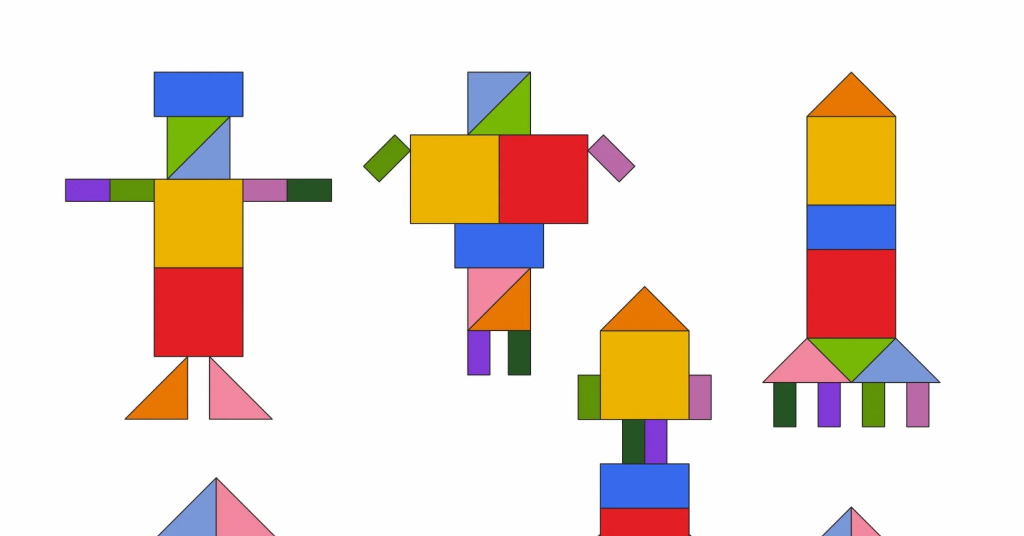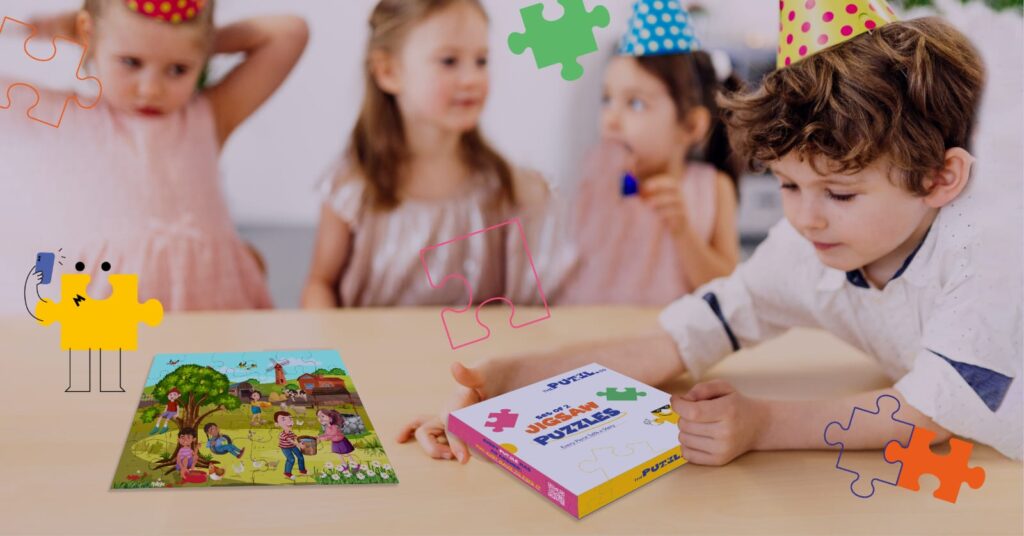Tangram puzzles are one of the most ancient and intriguing brain teasers, dating back to ancient China. Known for their simplicity yet challenging nature, they consist of seven flat pieces called “tans” that can be arranged to form a variety of shapes. These tans include five triangles of different sizes, one square, and one parallelogram. The objective is to recreate a specific shape using all seven pieces without overlapping them.
In this blog, we’ll explore the basic techniques to solve a tangram puzzle, key strategies to keep in mind, and tips for improving your skills.
Also Read: How to Solve Snake Cube
The Origin of Tangrams
Before diving into the solving process, a brief overview of the tangram’s history adds context to its appeal. The puzzle, believed to have originated over 1,000 years ago in China, was initially known as “Qi qiao ban,” meaning “seven boards of skill.” The tangram made its way to Europe in the early 19th century and quickly became popular for its seemingly endless possibilities in creating shapes, both simple and complex.
Tangram Puzzle Basics
The tangram set consists of the following seven shapes:
- Two large triangles
- One medium triangle
- Two small triangles
- One square
- One parallelogram
The goal of any tangram puzzle is to arrange these seven pieces into a specific design or figure, such as animals, letters, or objects. Despite the basic shapes involved, solving these puzzles can be deceptively challenging, which is part of their charm.
Step-by-Step Process to Solve a Tangram Puzzle
Step 1: Analyze the Target Shape
Begin by examining the shape you need to form. Whether it’s a square, a cat, or a boat, take note of the overall structure and the arrangement of angles. Some puzzles provide outlines, while others may only show silhouettes. Understanding the general framework is essential for an effective approach.
Step 2: Identify Key Elements
Determine which tans can fit key parts of the target shape. The large triangles usually make up the larger portions of the image, while the smaller pieces fill in more intricate details. For instance, in a silhouette of a house, the large triangles could represent the roof, while the square and smaller triangles might be part of the walls.
Step 3: Start with the Large Pieces
It’s often best to start with the large triangles because they can form the foundation of the shape. Position these pieces first, as they can help you map out the rest of the puzzle. Be mindful of their orientation, since rotating or flipping them could be necessary to fit the overall design.
Step 4: Fit the Medium and Small Pieces
Once the large triangles are placed, focus on fitting the medium triangle, small triangles, square, and parallelogram into the remaining spaces. These smaller pieces typically make up the finer details, such as corners, angles, or edges of the shape.
When placing these pieces, remember that:
- The parallelogram can be particularly tricky because it may need to be flipped to fit correctly.
- The square often acts as a bridge between the large triangles and smaller pieces, filling gaps or serving as a connector.
Step 5: Trial and Error
Tangram puzzles often require patience and persistence. Trial and error is a natural part of solving these puzzles, as pieces may need to be rotated or swapped out multiple times before the correct configuration emerges. Try different orientations and keep adjusting until all pieces fit perfectly into the shape.
Step 6: Double-Check for Overlaps
One of the essential rules in tangram puzzles is that none of the pieces should overlap. After you think you’ve completed the puzzle, carefully inspect the arrangement to ensure that all seven pieces lie flat without any overlapping or gaps. If the pieces overlap, adjust them accordingly.
Strategies for Mastering Tangrams
As you practice solving tangram puzzles, you’ll discover several strategies to improve your skills. Here are a few tips to enhance your tangram-solving abilities:
- Practice Recognizing Shapes: With experience, you’ll start to recognize patterns in the puzzles. Certain shapes, like squares and triangles, may appear frequently in different configurations. Developing a sense for these common arrangements will help you solve puzzles faster.
- Visualize the Pieces: Try mentally visualizing how the pieces can be arranged before physically moving them. This not only helps speed up the process but also enhances your spatial reasoning skills.
- Start with Simpler Shapes: If you’re new to tangrams, begin with simpler designs like squares or basic animals. As you gain confidence, you can move on to more complex shapes and silhouettes.
- Use a Guide or Template: Some tangram sets come with solution guides or templates that show outlines of the shapes. Using these can help beginners understand how the pieces fit together. Once you’re comfortable, try solving without the guide for an added challenge.
- Play Around with Symmetry: Many tangram designs are based on symmetrical patterns. If the shape you’re trying to create appears symmetrical, focus on creating one side and mirroring it with the remaining pieces.
Benefits of Solving Tangram Puzzles
Beyond the fun and challenge, tangram puzzles offer several cognitive and educational benefits, including:
- Improved spatial reasoning: Tangrams require you to think about how different shapes fit together, enhancing your ability to visualize spatial relationships.
- Enhanced problem-solving skills: The puzzle-solving process encourages logical thinking and patience.
- Boosted creativity: With endless possible combinations, tangrams stimulate creativity as you explore new shapes and designs.
Tangram puzzles are a fantastic way to engage both children and adults in brain-boosting activities. By following a step-by-step process and practicing regularly, you’ll become more adept at solving these classic puzzles. Whether for fun, learning, or improving cognitive skills, tangrams offer endless possibilities and hours of entertainment.
Now, grab your tangram set and start solving!



